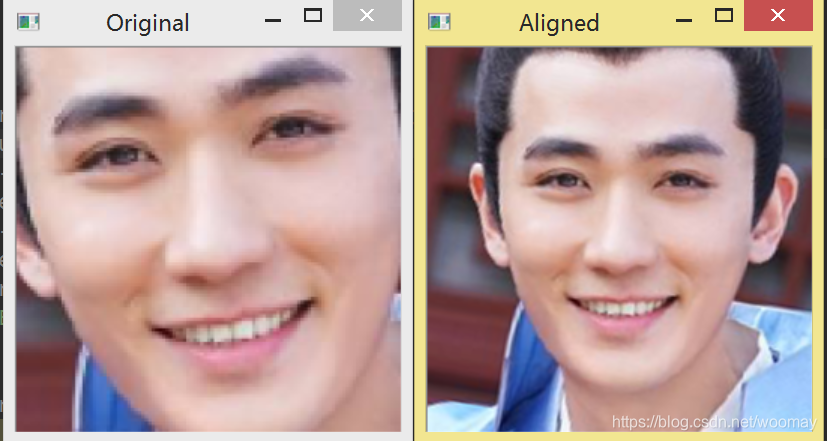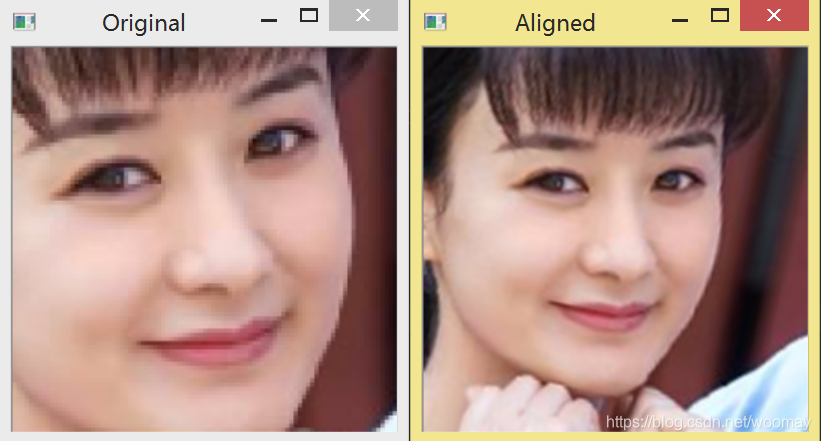输入:face landmark
输出:大小大致相同的face,face的眼睛在同一水平线
code:
# import the necessary packages
from imutils.face_utils import FaceAligner
from imutils.face_utils import rect_to_bb
# import argparse
import imutils
import dlib
import cv2
# # construct the argument parser and parse the arguments
# ap = argparse.ArgumentParser()
# ap.add_argument("-p", "--shape-predictor", required=True,
# help="path to facial landmark predictor")
# ap.add_argument("-i", "--image", required=True,
# help="path to input image")
# args = vars(ap.parse_args())
OriginalImg_dir = 'E:/zyl.jpg'
# initialize dlib's face detector (HOG-based) and then create
# the facial landmark predictor and the face aligner
detector = dlib.get_frontal_face_detector()
predictor = dlib.shape_predictor('shape_predictor_68_face_landmarks.dat')
fa = FaceAligner(predictor, desiredFaceWidth=256)
# load the input image, resize it, and convert it to grayscale
image = cv2.imread(OriginalImg_dir)
image = imutils.resize(image, width=800)
gray = cv2.cvtColor(image, cv2.COLOR_BGR2GRAY)
# show the original input image and detect faces in the grayscale
# image
cv2.imshow("Input", image)
rects = detector(gray, 2)
# loop over the face detections
for rect in rects:
# extract the ROI of the *original* face, then align the face
# using facial landmarks
(x, y, w, h) = rect_to_bb(rect)
faceOrig = imutils.resize(image[y:y + h, x:x + w], width=256)
faceAligned = fa.align(image, gray, rect)
# display the output images
cv2.imshow("Original", faceOrig)
cv2.imshow("Aligned", faceAligned)
cv2.waitKey(0)
note:其实还没懂怎么对齐的,理解后删掉note!!








 本文深入探讨了使用dlib库和面部特征点预测器进行人脸对齐的过程。通过实例演示了如何加载图片,检测人脸,提取关键特征点,并将人脸调整到同一水平线,实现大小一致的人脸对齐。
本文深入探讨了使用dlib库和面部特征点预测器进行人脸对齐的过程。通过实例演示了如何加载图片,检测人脸,提取关键特征点,并将人脸调整到同一水平线,实现大小一致的人脸对齐。



















 3920
3920

 被折叠的 条评论
为什么被折叠?
被折叠的 条评论
为什么被折叠?








